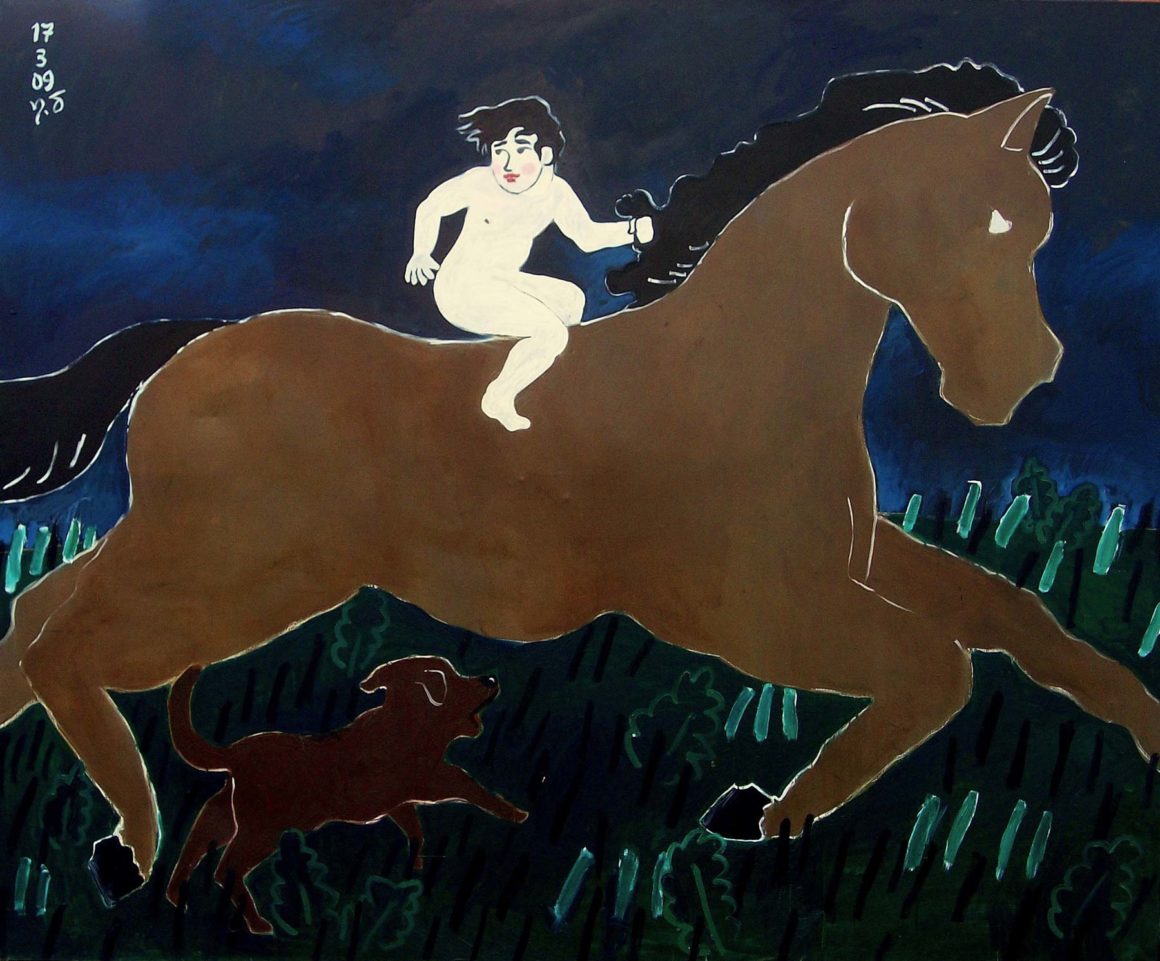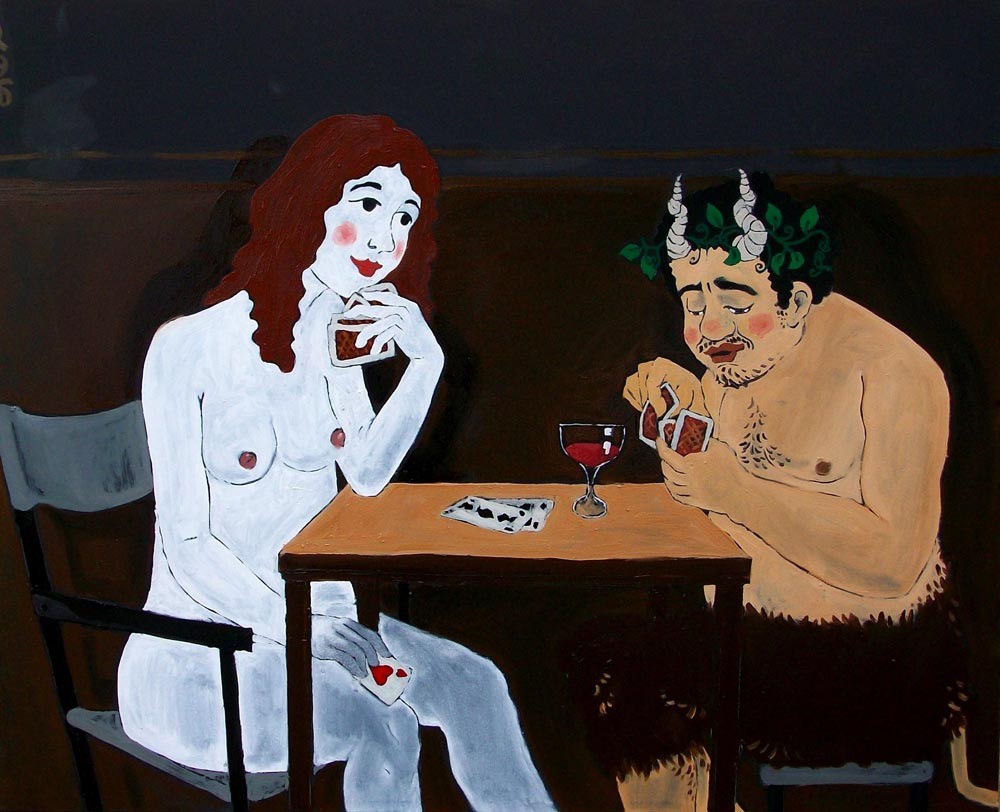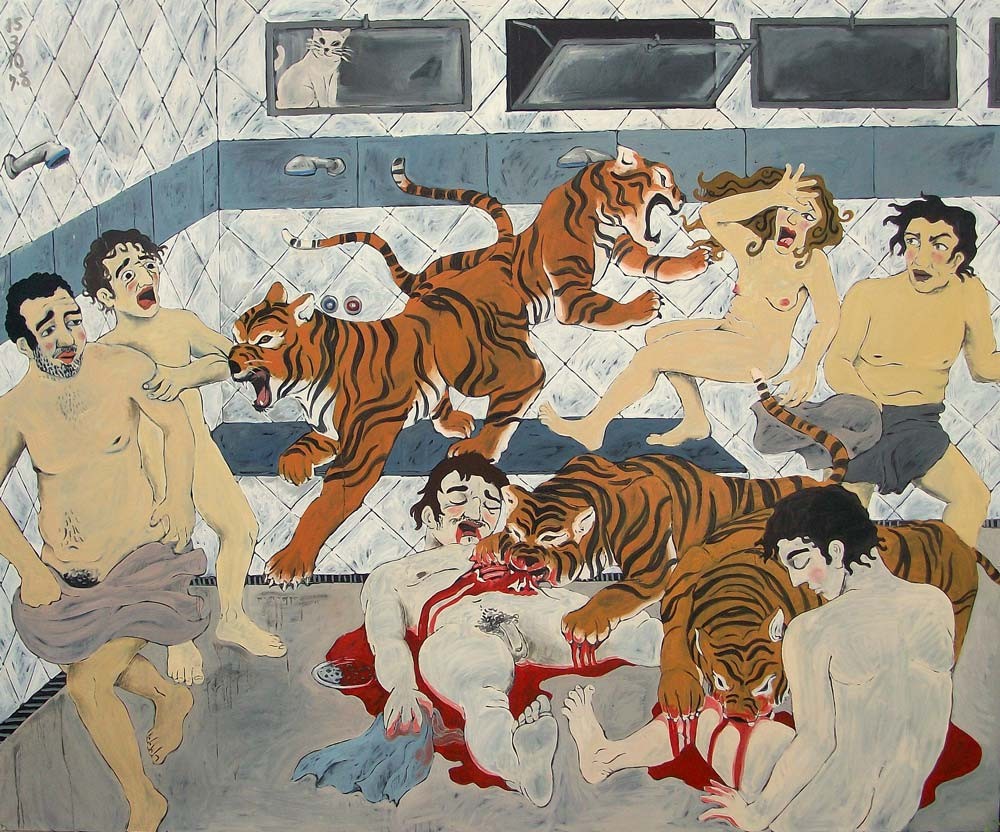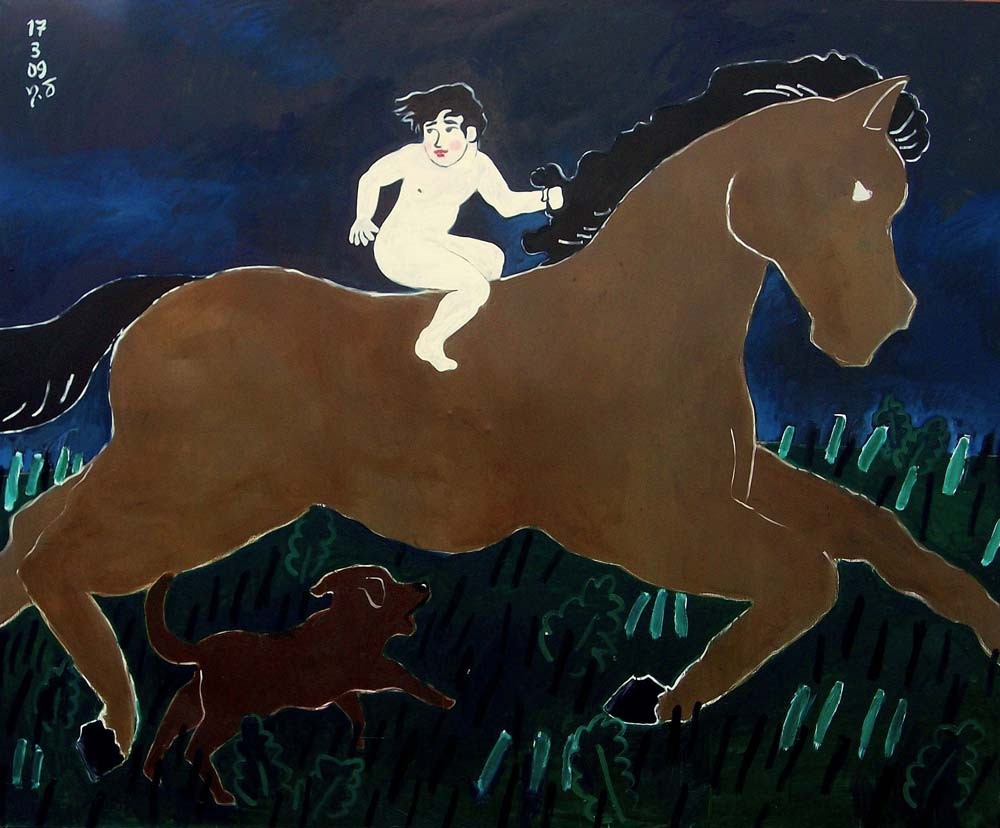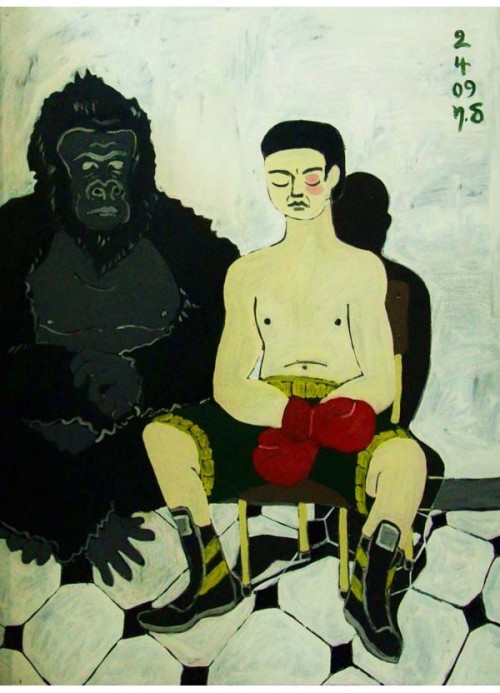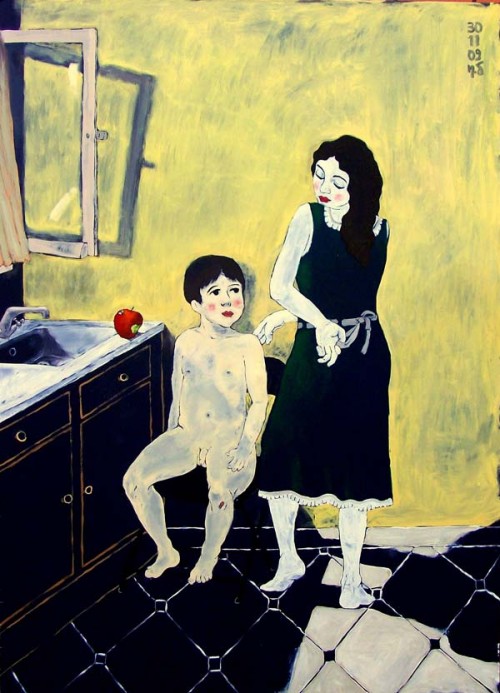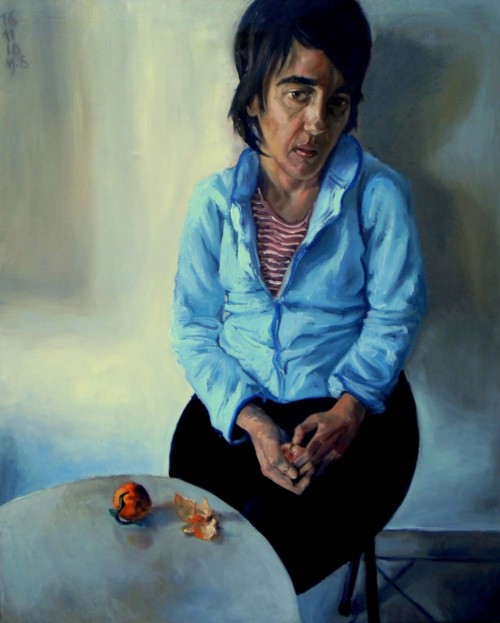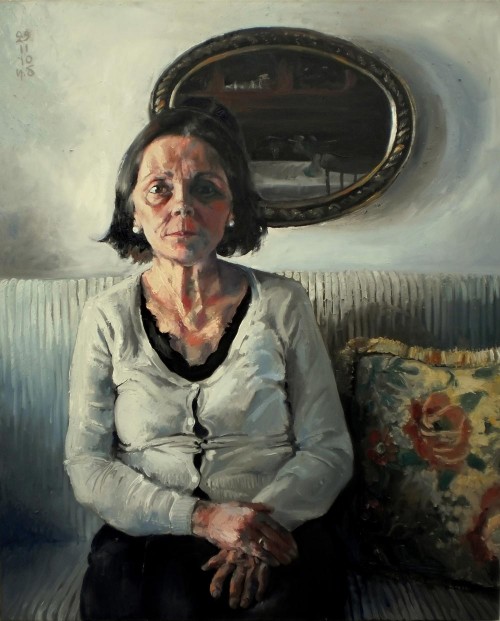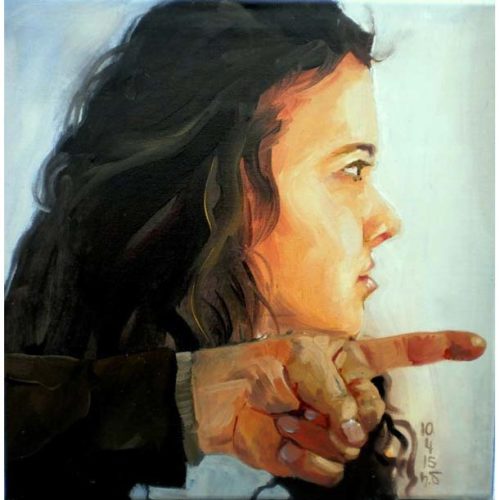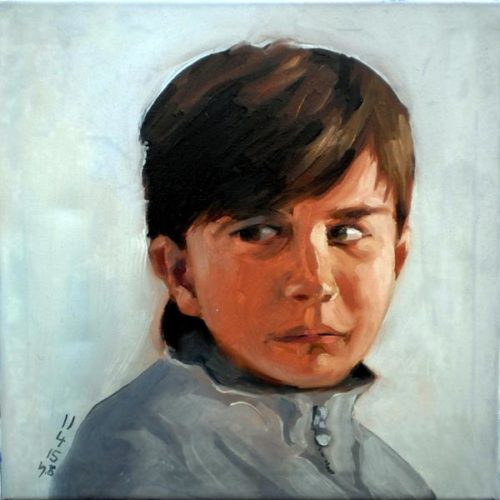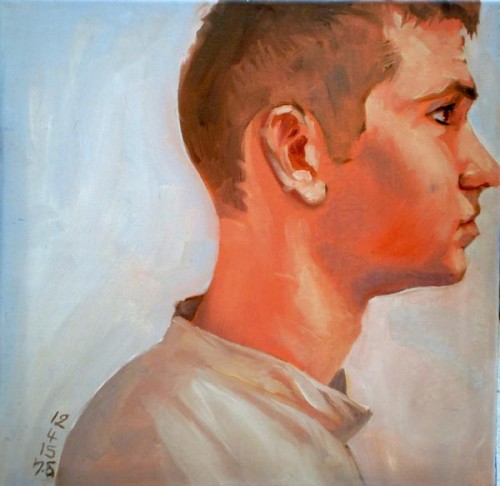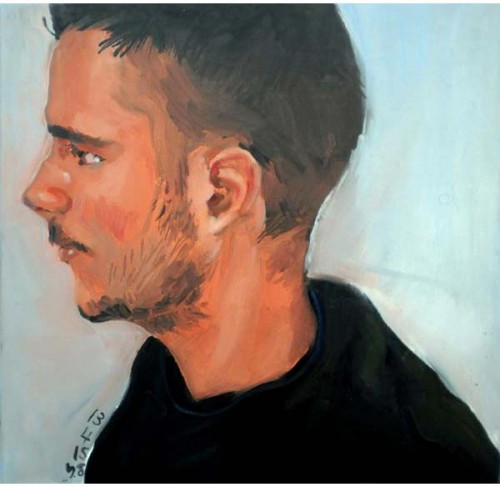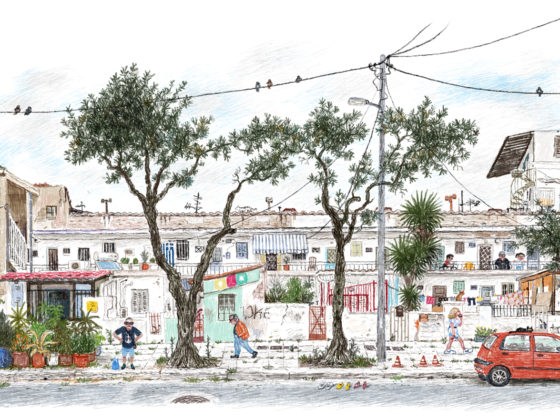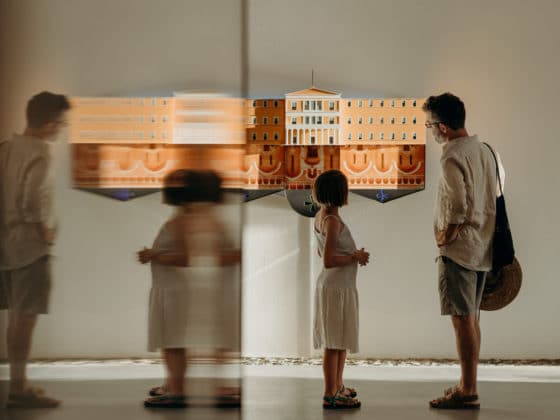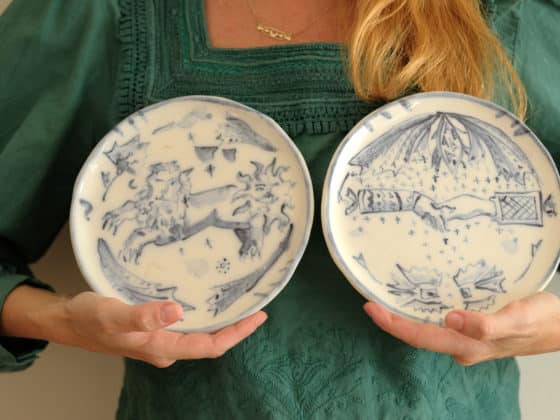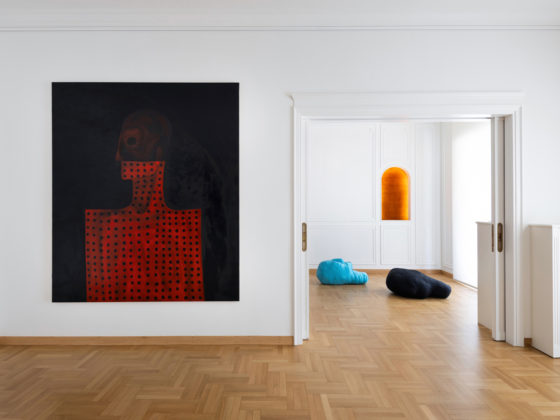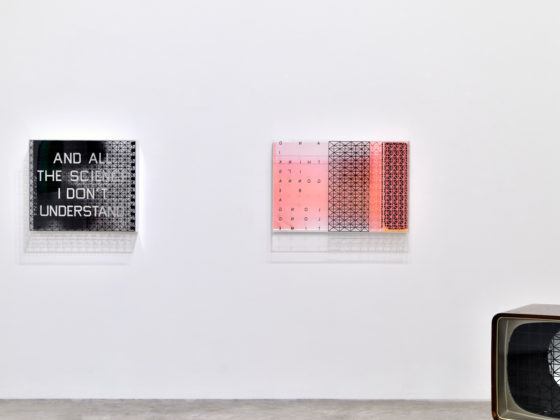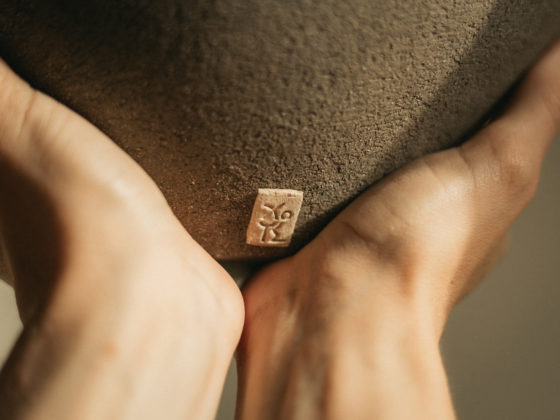“What I want in a work of art is realism, not only in the way of painting it, but also the act of painting itself, to render the theme and the narration realistic. In order for this to happen, I have to be objective with my theme and cold in my emotions, so as to use them as tools, as well. In order to achieve that, my point of view has to be that of a director, an actor, to be theatrical. Thus, when making my drafts in order to give a form to my composition, the most important factor is the chemistry between the viewers and the reality of the nature of my painting.
This element, in the viewing of my work, has troubled me a lot in my previous (and favorite) series of works. Since I was a little boy, composition has always fascinated me; the symbols that may be hiding behind a picture, the hidden lines that lead you somewhere, the rhythm that lies in a situation like that. This is what I tried to do through my numerous drafts that came before every final piece of work; and that is the most significant procedure. The morphoplastic part is just the finale. Its painting was mere and simple, it was just there for however long needed, just to serve the narration, not to overwhelm it.
Later on, I engaged myself in realism; a form of psychoanalysis, in my opinion. “Shaping” the colors so carefully is such a beautiful emotion to me. When I felt that I conquered the construction of a picture with that technique, I was looking for ways to incorporate narrative components again (such as the student or the soldier), in order not to make my work look like just somebody’s simple portrait. In a way, I tried to make some historical records by recording contemporary situations and figures, as they are, without prettification, even with a slight deformity; a deformity that helps for the better understanding of the situation (e.g. the sickly-looking soldier).
Now, I am trying to return to my former and simpler painting, having already found new solutions, new themes or, better, themes of my era. The works of that era seemed to reflect something old, such as Satyrs (influenced by Picasso) or white women with attractive curves (the ideal beauty of older times); new stylistic features, distancing from the influences of Moralis or Matisse (two of my favorite painters), but I have to go for my own.
Everyone can paint, as long as they go for it.“
